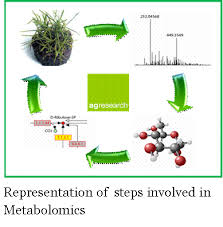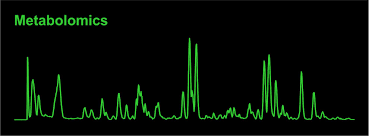 Some common questions related to metabolomics field, such as its definition, its experimental procedures and data analysis and so on are always bothered researchers during their project. Here we are going to introduce these questions by using two chapters in this blog.
Some common questions related to metabolomics field, such as its definition, its experimental procedures and data analysis and so on are always bothered researchers during their project. Here we are going to introduce these questions by using two chapters in this blog.
In the first chapter, we are going to introduce metabolomics’ definition, its importance in biological researches and its methods. And in the next chapter, we are going to introduce its applications and the number of substances and detailed experimental procedures.
What is metabolomics?
Metabolomics is a newly-developed subject after the discoveries of genomics and proteomics. And it is also an important part of System Biology. It can be divided into two aspects, untargeted metabolomics and targeted metabolomics for biomarker discovery. What’s more, many intracellular activities are associated with metabolites, including cell signaling, energy transfer. It mainly focuses on the study of a collection of all metabolites in a cell at a time. Although Genome has a close relationship with protein expression, metabolites can reflect the cells’ environment, which has something to do with the nutritional status of the cells, the effects of drugs, environmental contaminants and other external factors. So it is believed that genomics and proteomics can indicate what may happen, and metabolomics can reflect what has happened.
Why is metabolomics a means of scientific research?
The reason why metabolomics can be used as a means of scientific research is depending on its importance and function in biological field.
- The production and metabolism of small molecules are the result of the biological organisms. The analysis of metabolites in biological fluids can more directly and accurately reflect the pathophysiology of the organism.
- Samll changes of gene and protein expression will be amplified on metabolites, making detection easier.
- Metabolomics has a simple metabolome database, which is far from the complexity of complete genome sequencing and its large number of expression sequence tag database.
What are the means of metabolomics testing?
The main approaches belonging to metabolomics testing are NMR, LC-MS, GC-MS and high performance liquid chromatography and gas chromatography. Recently, high performance liquid chromatography (hplc) is the most popular technique for metabolomics testing. By detecting a series of samples spectra, we can determine the pathophysiology of the organism, gene function, drug toxicity and pharmacodynamics by combining with chemical pattern recognition method and researchers can also identify associated biomarkers.
These are some basic information on metabolomics. In the next chapter, we will introduce more useful information related to its experiments.
